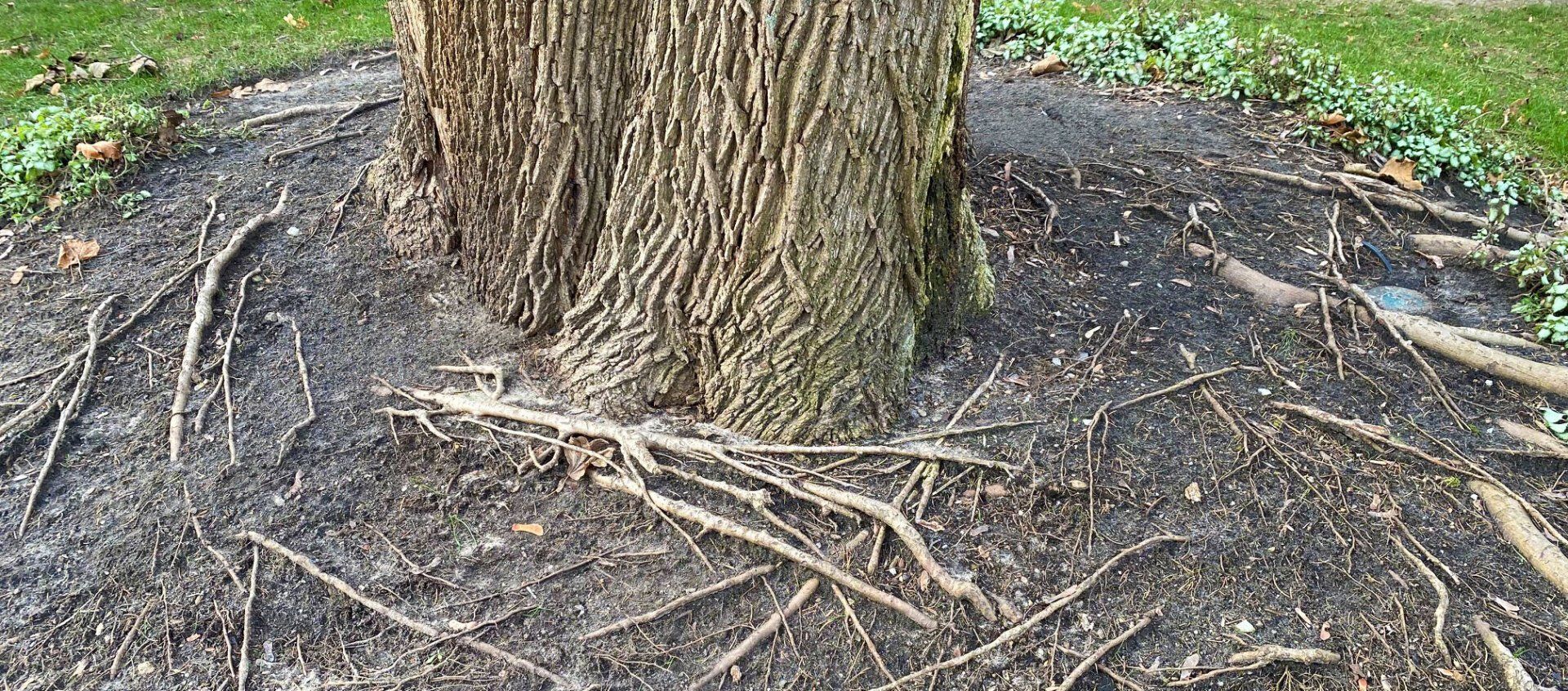How to Deal with Exposed Tree Roots
Anelia’s Tree Corner
Interesting facts and tree care tips from certified arborist Anelia Tichkova
How to Deal with Exposed Tree Roots
Today we’re diving into the underground world of roots - not often considered, but a very important part of urban tree health.

Tree roots have four primary functions: anchorage, storage, absorption, and conduction.
Roots grow where water, oxygen, and space are available. We often envision tree roots as deep underground systems. But did you know, the majority of a tree’s absorbing roots are in the top 30cm of soil? Sometimes over 90% of all roots are in the upper 60cm of soil. This shallow area can be easily damaged, exposed or disturbed.
The section where the roots join the main stem is known as the root crown. From the root crown, the lateral roots spread out and may extend for distances sometimes two to three times the radius of the crown, depending on the tree species, environmental and soil conditions. Some trees form sinker roots which grow vertically downward off the lateral roots, providing anchorage for the tree. Most trees do not have tap roots after their seedling stage, often obstructed by the expansion of roots horizontally or by unfavourable soil conditions deep into the soil.
What causes roots to be exposed above ground, often known as ‘surface roots”?
Some tree species are predisposed to have shallow roots, including Norway, Silver and Red Maples, Tulip Trees, Colorado Blue Spruce, Willows and Ash Trees, Aspens, Birch, Poplar and Beech trees. However, any tree can develop surface roots with age and in certain conditions. Here are some factors that may be the culprit:
- Poor soil conditions: surface roots are common in clay-based or compacted urban soils. When the roots in the top layers of soil get large enough, they break through the surface. Gradually, roots are exposed further by rain and wind.
- Improper planting practices: planting trees is often said to be an art combined with science. The way a tree is planted has a lot to do with its future growth, health and life expectancy. If planted too shallow, or above grade, the roots that normally grow horizontally have nowhere to go. They either stop at the edge of the planting hole or they grow above the surface leaving them exposed and without much moisture and nutrients. Planting too deep would cause decline in tree health and growth as well.
- Physical obstructions: as the tree grows, the roots grow as well. When there is an obstruction, or not enough space, the roots start struggling to find their way and sometimes they pop up above the surface, especially in clay soils where exploiting depth of soil is not an option.
- Sloped terrains and soil erosion: sloped terrains are prone to erosion so special attention should be paid to tree species section when planting in such terrains
What to do and not to do if you have a tree with exposed roots already?
The exposed roots of a newly planted tree can freeze and die over the winter, or dry out in the hot summer months. Mature trees have a better chance of surviving while they have a better-established root system able to maintain the vital root functions for the tree.
- To protect exposed roots, the best strategy is to apply a mixture of equal parts of topsoil and compost, adding a 5cm-layer of the mixture around the base of the tree to cover the exposed roots. If the roots are still visible within a year, add another 5 centimeters of the mixture. There is a risk of suffocating the tree if you add more than 5-6cm of soil and raise the grade level of the existing tree.
- Alternatively, you can add 8-10cm of mulch instead of the topsoil/compost mixture. Be careful not to pile mulch against the trunk of the tree. Create a hollow ‘donut’ shape around the perimeter of the tree so that the mulch covers the root area.
- Don’t cut surface roots! Cutting any roots can compromise the tree stability, destroy the tiny absorbing roots and provide a point of entry to diseases and harmful insects.
- Do not plant any other perennials or groundcovers around the tree as they will compete for nutrients and weaken the tree.
Overall, avoid planting trees with a shallow root system, especially in clay soils, and be mindful of the mature size of the tree you are planting so you can allow sufficient space for the tree to grow. A healthy tree root system is critical to tree health! It is often up to us to maintain the right environment around a tree which promotes healthy tree growth and extends the life-span of our precious urban trees.
